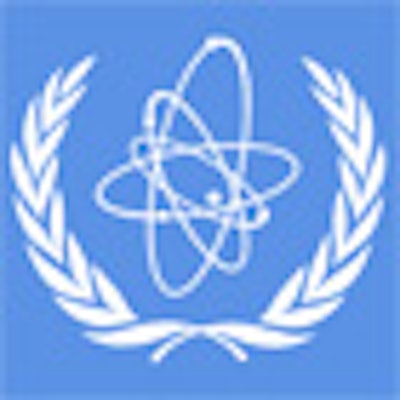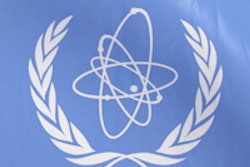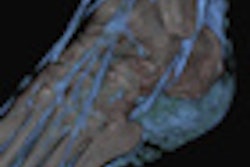
Europe has wide disparities in access to radiation therapy services, shortfalls in infrastructure and skilled staff, and unequal spending on resources, according to an International Atomic Energy Agency (IAEA) study of 33 countries published online on 24 January in Lancet Oncology.
The analysis exposes the reality of radiation therapy services on a country-by-country basis at a time when cancer is on the rise throughout Europe. Approximately 3.2 million Europeans are diagnosed with cancer every year. Roughly 45% to 55% of cancer patients require radiotherapy treatment, a portion of whom require multiple regimes of treatment.
Are the countries of Europe adequately prepared?
The objective of the Lancet Oncology study was to provide basic indicators for planning radiotherapy infrastructure and man power at national and regional levels, according to an IAEA research team led by Dr. Eduardo Rosenblatt of the Applied Radiation Biology and Radiotherapy Section.
Data on radiotherapy equipment registered in the IAEA's Directory of Radiotherapy Centres (DIRAC) database was analyzed as part of the European Network for Information on Cancer (EUNICE) project from 2008 through June 2012. The EUNICE project was jointly conducted by the IAEA in Vienna; the International Agency for Research on Cancer in Lyon, France; and the International Prevention Research Institute, also in Lyon.
Treatment center infrastructure
Availability of radiotherapy treatment service providers varies widely among countries and regions in Europe. In July 2012, Europe had 1,286 registered radiotherapy centers in the DIRAC database. Germany had the largest number, with 289 centers (22.5% of the total), followed by France with 177 centers (13.8%), Italy with 172 centers (13.4%), and Spain with 117 centers (9%).
The authors analyzed the number of treatment machines at each facility, focusing on teletherapy and brachytherapy machines. Teletherapy machines included linear accelerators, clinical accelerators (helical tomotherapy, robotic radiotherapy, high-energy stereotactic x-ray radiosurgery, and mobile electron accelerators for intraoperative radiotherapy), and radionuclide units.
The Nordic countries of Europe, as well as the Netherlands, Slovenia, and the U.K. had the most centralized radiotherapy infrastructure, with fewer facilities but more treatment equipment at each center, typically from four to 10 teletherapy machines. In most other European countries, radiotherapy facilities varied in size and capacity, with many small facilities focusing on specific types of cancer treatment and having only one or two treatment machines.
Using a benchmark of four machines per radiotherapy center as the threshold below which fragmentation of radiotherapy facilities occurs, the authors identified that radiotherapy treatment was fragmented in 28 of the 33 countries analyzed. They expressed concern that such fragmentation could have a detrimental effect on the economic burden of radiotherapy, as well as its quality.
Equipment accessibility by population
On average, the study determined that there were 5.3 teletherapy machines per 1 million residents in Europe. The authors used 5.9 machines per 1 million inhabitants as a benchmark to determine desirable density for radiotherapy equipment and a density of four machines per 1 million people to be the minimum requirement.
They identified large variations across countries. Belgium, the Nordic countries, and Switzerland had more than eight machines per 1 million inhabitants. Macedonia and Romania had fewer than two machines per 1 million population. Ten countries were identified as having an insufficient number of teletherapy machines to meet estimated need.
Based on an analysis of population and cancer statistics, the authors believe that there is an apparent shortage of teletherapy machines in Austria, Germany, Italy, Portugal, and the U.K. A shortage of treatment equipment also exists in most countries in eastern and southeastern Europe, particularly in Bulgaria, Macedonia, and Romania.
Compounding the shortage is the fact that equipment upgrading and modernization are needed in some eastern and southeastern European countries. In view of the fact that the authors identified a negative correlation between gross national income per person and the number of patients per teletherapy machine, they expressed concern about the availability of financial resources to bring radiotherapy treatment resources up to par.
Evaluation of quality and effectiveness of radiotherapy treatments performed was outside the scope of the study.
Future considerations and planning
"Despite being more cost-effective than surgery and chemotherapy for treating cancer, the building and running of a radiotherapy center requires substantial financial and technical investment. The initial cost is at least 5 million euros, a figure which can climb to tens of millions depending on the size of the center and the radiotherapy technology used," the authors wrote.
In addition to the costs of training and employing clinical and support staff, other recurring costs include maintenance contracts, upgrades of software and hardware, and replacement of radioactive sources.
In view of this investment, changes in Europe's radiotherapy needs must be predicted far in advance, the authors warned. While stating that the DIRAC database is very useful for planning infrastructure and man power requirements, they recommended that it also collect additional data, such as epidemiological trends in number and types of cancers.
"Our data should enable governments, European Union bodies, and international organizations to see at a glance how adequate the provision of radiotherapy is in each European country. For the first time, it gives countries the ability to plan investment objectively and ensure the building and maintenance of sufficient capacity to meet the ever-increasing demand," Rosenblatt said.


















